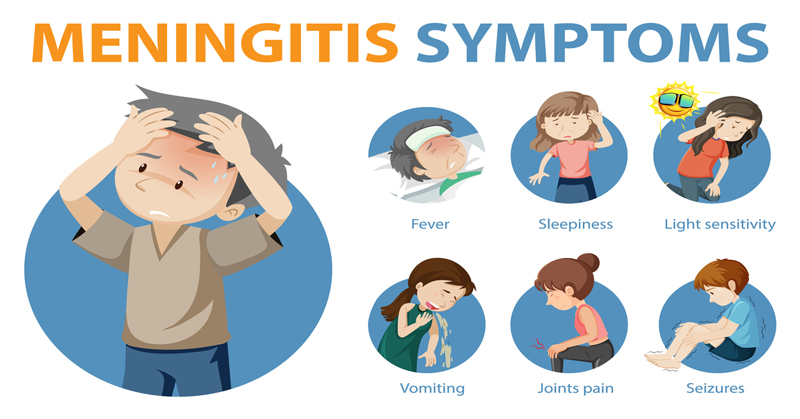Myasthenia Gravis - Understanding the Disease
Nov. 21, 2023 #Multiple Sclerosis
Introduction
Myasthenia gravis (MG) is a chronic autoimmune neuromuscular disorder characterized by muscle weakness and fatigue, particularly in the skeletal muscles that control eye movements, facial expressions, chewing, and swallowing. This condition arises from the immune system mistakenly attacking the neuromuscular junction, impairing communication between nerves and muscles.
In this comprehensive guide, we will define myasthenia gravis, explore its causes, delve into the symptoms that distinguish it, and discuss the various treatment options available for individuals grappling with this complex neuromuscular disorder.
Defining Myasthenia Gravis
Myasthenia gravis is a chronic autoimmune disorder that affects the neuromuscular junction – the point of communication between nerves and muscles. In individuals with MG, the immune system produces antibodies that target and attack specific proteins in the neuromuscular junction, particularly the acetylcholine receptors. Acetylcholine is a neurotransmitter that plays a crucial role in transmitting signals between nerves and muscles.
The antibodies produced in MG interfere with the normal functioning of acetylcholine receptors, leading to muscle weakness and fatigue. This weakness is often more pronounced with repeated use of the affected muscles and tends to improve with rest. Myasthenia gravis can affect various muscle groups, including those controlling eye movements, facial expressions, swallowing and limb movements.
Causes of Myasthenia Gravis
The exact cause of myasthenia gravis is not fully understood, but it is considered an autoimmune disorder. Autoimmune conditions occur when the immune system, which is designed to protect the body from foreign invaders like bacteria and viruses, mistakenly targets its own tissues. In MG, the immune system targets the acetylcholine receptors at the neuromuscular junction. Key factors and considerations related to the causes of myasthenia gravis include:
Autoimmune Response:
In myasthenia gravis, the immune system produces antibodies, specifically immunoglobulin G (IgG), that attack the acetylcholine receptors on the surface of muscle cells. This autoimmune response disrupts the normal signaling between nerves and muscles.
Thymus Gland Abnormalities:
The thymus gland, a small organ located in the chest, plays a role in the development of the immune system. In some individuals with myasthenia gravis, the thymus gland is found to be abnormal, with thymic tumors (thymomas) or hyperplasia (enlargement) observed. The relationship between thymus abnormalities and MG is not fully understood, but thymectomy (surgical removal of the thymus) is sometimes recommended as a treatment for MG.
Genetic Factors:
There is evidence to suggest a genetic predisposition to myasthenia gravis. Individuals with a family history of autoimmune disorders may have a higher risk of developing MG.
Other Autoimmune Conditions:
Myasthenia gravis is occasionally associated with other autoimmune disorders, such as rheumatoid arthritis, lupus or thyroid disorders. The coexistence of multiple autoimmune conditions in the same individual is known as polyautoimmunity.
Infections:
Certain infections, particularly respiratory infections caused by bacteria or viruses, may trigger the onset or exacerbation of myasthenia gravis symptoms. The relationship between infections and MG is complex and requires further research.
Symptoms of Myasthenia Gravis
Myasthenia gravis manifests with a range of symptoms that primarily involve muscle weakness and fatigue. The severity and specific muscles affected can vary among individuals. Key symptoms of myasthenia gravis include:
Muscle Weakness:
Ocular Weakness: Weakness in the muscles that control eye movements, leading to drooping eyelids (ptosis) and double vision (diplopia).
Facial Weakness: Impaired facial muscle strength, resulting in difficulty smiling, chewing, or making facial expressions.
Limb Weakness: Weakness in the arms and legs, making activities such as lifting objects or climbing stairs challenging.
Fatigue and Worsening Symptoms with Activity:
Exercise Intolerance: Symptoms tend to worsen with repeated use of affected muscles and improve with rest. Fatigue is a hallmark feature of myasthenia gravis.
Respiratory Involvement:
Breathing Difficulties: In severe cases, myasthenia gravis can affect the muscles responsible for breathing, leading to respiratory distress. This is a medical emergency and requires immediate attention.
Swallowing Difficulties:
Dysphagia: Weakness in the muscles involved in swallowing can result in difficulty eating, drinking, or swallowing pills.
Speech Impairment:
Dysarthria: Impaired muscle control in the tongue and throat can affect speech, resulting in slurred or nasal speech.
Variable Symptoms:
Fluctuating Weakness: Symptoms may vary throughout the day and can be unpredictable, with periods of worsening and improvement.
It's important to note that myasthenia gravis primarily affects voluntary muscles, and involuntary muscles such as the heart and smooth muscles are typically spared. The course of the disease can be variable, with some individuals experiencing relatively mild symptoms, while others may face more significant challenges.
Treatment Options for Myasthenia Gravis
Managing myasthenia gravis involves a combination of medications, lifestyle modifications, and, in some cases, surgical interventions. The goal of treatment is to improve muscle strength, reduce symptoms, and enhance overall quality of life. Key treatment modalities for myasthenia gravis include:
Cholinesterase Inhibitors:
Pyridostigmine (Mestinon): Cholinesterase inhibitors, such as pyridostigmine, help increase the levels of acetylcholine at the neuromuscular junction, improving muscle function. These medications are often used as a first-line treatment for MG.
Immunosuppressive Medications:
Corticosteroids: Medications like prednisone may be prescribed to suppress the immune system and reduce the production of antibodies that target acetylcholine receptors.
Azathioprine, Mycophenolate Mofetil: These immunosuppressive medications are used to modulate the immune response and may be considered in cases where symptoms are not adequately controlled with cholinesterase inhibitors alone.
Intravenous Immunoglobulin (IVIG):
IVIG Infusions: Intravenous immunoglobulin, a concentrated mixture of antibodies from healthy donors, can be administered to modulate the immune response. IVIG is often used for short-term symptom control, particularly during exacerbations.
Plasma Exchange (Plasmapheresis):
Removal of Antibodies: Plasma exchange involves removing a portion of the patient's blood, separating the plasma (which contains antibodies), and replacing it with a plasma substitute. This procedure can temporarily reduce the levels of circulating antibodies.
Thymectomy:
Surgical Removal of Thymus: Thymectomy may be considered, especially in individuals with thymomas or thymic hyperplasia. This surgical procedure aims to remove the thymus, potentially altering the immune response.
Monoclonal Antibodies:
Rituximab: This monoclonal antibody targets B cells, which play a role in antibody production. Rituximab may be considered in cases of refractory or severe myasthenia gravis.
Supportive Measures:
Respiratory Support: In cases of respiratory muscle weakness, respiratory support with non-invasive ventilation or mechanical ventilation may be necessary.
Speech and Swallowing Therapy: Speech therapy and swallowing therapy can help manage difficulties related to speech and swallowing.
Individualized Treatment Plans:
Treatment plans for myasthenia gravis should be individualized based on the severity of symptoms, response to medications and overall health. Regular follow-up with healthcare providers is crucial for monitoring progress and adjusting treatment as needed.
Precautions and Considerations
Medication Side Effects:
Medications used to manage myasthenia gravis may have side effects, and individuals should be monitored closely for adverse reactions. Adjustments to medication dosages may be necessary.
Avoiding Triggers:
Identifying and avoiding triggers that worsen symptoms, such as stress, excessive heat, or certain medications, can help manage myasthenia gravis.
Managing Fatigue:
Fatigue is a common symptom of myasthenia gravis, and individuals should prioritize rest and manage energy levels to prevent exacerbations.
Emergency Preparedness:
Individuals with myasthenia gravis and their caregivers should be aware of the signs of a myasthenic crisis (severe muscle weakness, difficulty breathing) or a cholinergic crisis (excessive medication-induced muscle weakness). Emergency plans and contact with healthcare providers are crucial in such situations.
Vaccinations:
Individuals with myasthenia gravis should discuss vaccination schedules with their healthcare providers, particularly regarding influenza and other preventable infections.
Conclusion
Myasthenia gravis is a complex neuromuscular disorder characterized by muscle weakness and fatigue, impacting various aspects of an individual's life. While there is no cure for MG, advances in treatment options and ongoing research contribute to a better understanding of the condition.
With a combination of medications, surgical interventions, and supportive measures, individuals with myasthenia gravis can often manage their symptoms effectively and lead fulfilling lives. Regular communication with healthcare providers, adherence to treatment plans and a proactive approach to managing triggers and symptoms are essential components of comprehensive care.
Continued research efforts aimed at unraveling the complexities of myasthenia gravis hold the promise of further improving treatment options and enhancing the overall well-being of individuals affected by this challenging autoimmune disorder.











COMMENTS